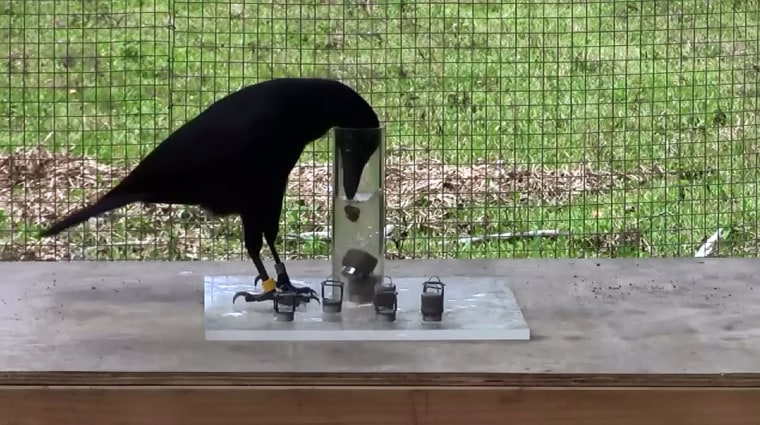A species of crow native to islands east of Australia has long wowed scientists with its intelligence, and now it has shown it can solve at least one puzzle as well as the average 7-year-old child, scientists reported on Wednesday.
Like other research on the cognitive abilities of nonhuman animals, the study sheds light on the evolution of intelligence and whether disparate cognitive capacities develop in lockstep or at radically different rates between species. The results suggest that an understanding of cause and effect evolved fairly early.
By studying the cognitive abilities of other animals, "we can assess the factors which may have led to the evolution of different cognitive mechanisms, in particular the flexible problem solving, or intelligence, that we find in certain groups in the animal kingdom," said biologist Sarah Jelbert of the University of Auckland, who led the research. "Understanding this could in turn help us to piece together the evolution of cognition in our own species."

For the new study, published in the scientific journal PLOS ONE, scientists captured six New Caledonian crows (Corvus moneduloides) from Grande-Terre, part of the archipelago of New Caledonia.
This species is the only nonprimate that makes tools in the wild. The birds break off twigs and trim them, and tear off barbed leaves to use as hooks to dig for insects. In the lab, they have bent wires to retrieve out-of-reach food.
The scientists challenged the crows with a task inspired by an ancient Greek fable by Aesop known as the "Crow and the Pitcher," in which a thirsty crow confronts a pitcher whose water level is too low for it to reach and so drops in stones to raise the level.
After training the crows to pick up stones, Jelbert and her colleagues challenged them with different Aesopian setups in which cubes of meat attached to corks were in transparent tubes, too deep for the crows' beaks to reach.
The birds shined. Presented with two tubes, one partially filled with sand and the other partially filled with water, the crows wasted little effort dropping stones into the sand. Instead, 76 percent of their tries were on the water-filled tube.
Given a choice of dropping rubber (which sinks) or polystyrene (which floats) as well as hollow or solid objects into water-filled tubes, the crows opted for the water-raising rubber and solid objects on nearly 90 percent of their tries.
Presented with narrow and wide tubes with water at equal heights, however, they opted to drop water — raising objects into the wide tube much more often — a less efficient though ultimately effective strategy. It took seven deposits to get the meat from the wide tube but two for the narrow tube.
In their understanding of physics — how objects displace water — the crows were comparable to 5-to-7-year-old children, the researchers said. In particular, the crows seemed to understand the different effects of hollow and solid objects, the first time a study had shown that.
